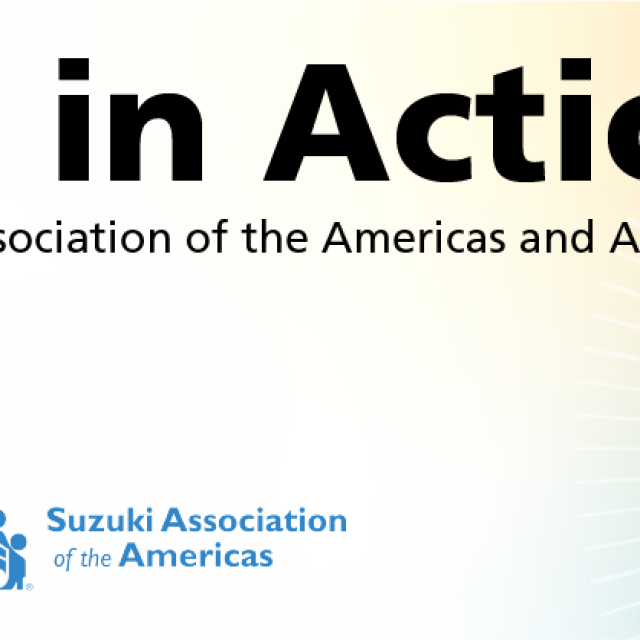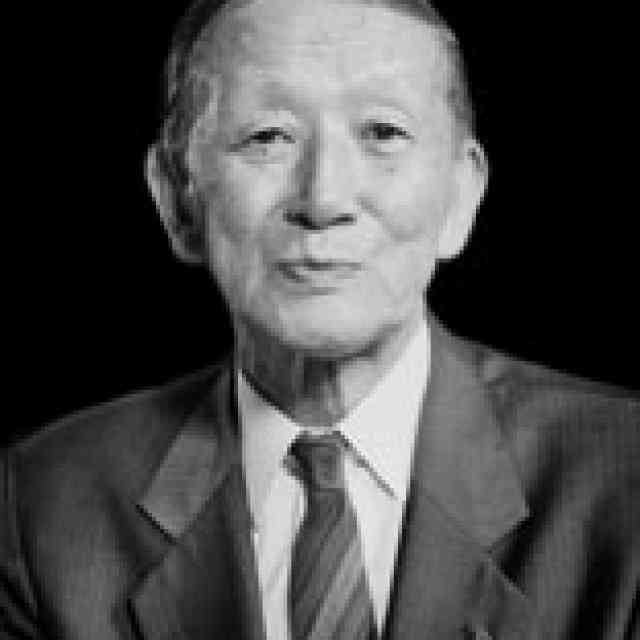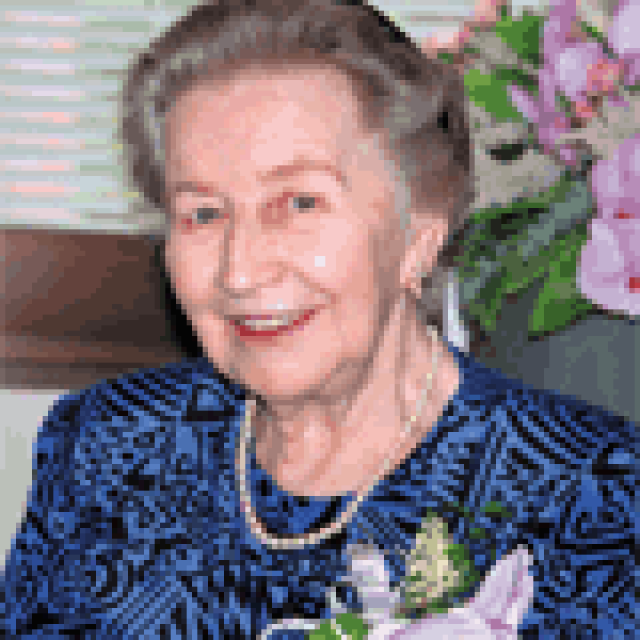I once asked Dr. Suzuki why he didn’t compose more. He replied that he wanted to compose, but when, as a young man, he heard the music of Brahms, he gave up. I suggested to him that perhaps there was a way for all children to compose if they started early enough and with the right method, that perhaps if he had had that opportunity as a young man, things might have been different for him. He was very intrigued.
At the time, I was teaching and experimenting with a new idea I had about teaching creativity to very young children using structured improvisation, and thought I had perhaps stumbled upon a Suzuki composition method. In fact, there were so many similarities between what I was experimenting with and Dr. Suzuki’s methods that I thought, out of respect, it should maybe carry his name. Which was why, in 1984, I decided to spend my summer with him in Matsumoto, Japan.
Discoveries and Similarities
In the early 1980s, I discovered that there was a basic misunderstanding about the nature of the creative process: the belief was that it required complete freedom, and nothing more. Historically, experiments in teaching creativity failed because they followed this misconception, leaving people with the conviction that creativity couldn’t be taught.
The nature of creative expression does demand a nurturing environment like Dr. Suzuki’s, and my method even took his idea a step further by suggesting, “There’s no such thing as a mistake when you create!” But I also discovered the missing element. It was repetition. Creative ability can only be developed through an intense disciplined process of repeatedly searching for creative solutions to problems which have no “correct” answers.
In my approach, we were using recordings, not simply to listen to, but also to interact with. Students practiced by improvising daily to pre-recorded backing tracks. There truly were no right or wrong answers, so students were intuitively searching for their own unique and deeply personal solutions, finding their own artistic voices. This led to inspiration, in the form of musical ideas and heightened self-expression, which over time would lead to outstanding creative ability.
Like Dr. Suzuki, I also realized that the best time to develop creative ability was when it innately begins, when children are very young and passionate about expressing themselves. So, I developed a system that was based on simplicity of instructions, allowing the focus to be on one point: Creativity!
The Summer That Changed My Life
What I learned that summer in Matsumoto from Dr. Suzuki went much deeper than simply learning how to teach. He was an incredibly creative man, always coming up with a “New Idea!” He was one of the world’s great humanitarians and each day I felt deeply privileged to be in his presence.
I will never forget my first meeting with Dr. Suzuki. I had been traveling by train from Kyoto and was greeted by members of his staff at the station. They brought me immediately to his school in Matsumoto. There was a class going on and a young man playing on the stage. I was invited to sit next to Dr. Suzuki. To my surprise and awe, this great man immediately took my hand in his and began speaking to me about what he was teaching that day. I was overwhelmed, not by the music or what he was saying to me, but that he held my hand in his. By that simple gesture he let me know that, like all who came there to study, I was deeply important to him and he couldn’t wait to begin to share his great passion for teaching.
He often wrote about the importance of nurturing, but it was even more powerfully illuminated in his daily teaching. One day when I came in for a class that he was about to teach, there weren’t any seats left, so I simply sat down on the floor. As soon as I did, Dr. Suzuki, who was then 84 years old, got up from his seat and sat down on the floor with me. It was a teaching moment: without a word he showed us that no one would be left out, and how important it was to be always aware of each person in the room; to be sure to treat everyone equally and fairly.
As the summer wore on, I gathered the courage to request a formal meeting with him. I had brought recordings of my students passionately improvising. I wanted to share those recordings and try to explain my ideas to him. Our language barrier made it difficult for us to truly communicate, but with the help of translators I did my best to explain what it was I was trying to do and to ask if he thought I had come up with a Suzuki composition method. He was very interested but felt that it was too different from his teaching to call it a Suzuki composition method. He suggested I put my own name on it. I wound up borrowing his language anyway, because it was so appropriate, and eventually called my method Creative Ability Development, or CAD.
As the summer was drawing to a close, I was moved to give him a gift to thank him for all the incredible experiences he had given me. I decided to compose him a piece of music and based it on a haiku I wrote for him called “To The Mountain:”
I am a small tree
On a warm-hearted mountain
I dig my roots deep
It was a simple piece, but he loved it. After I performed it for him, he told everyone, “She is a real composer.” A high honor. At the end of my time in Japan, the summer school was taking place. When the children gathered for the play-in, there wasn’t enough room on the stage for all of them, so many of the older students played from the audience. We, the Kenkusai (student teachers), were seated in a place of honor right in front of the stage, surrounded by the beautiful music. We all held each other and cried because we were so moved.
After the children played, Dr. Suzuki asked us to come to the stage to demonstrate some new ensemble music written to practice sight reading. At the end of the concert Dr. Suzuki began speaking in Japanese. I couldn’t really understand him, so I was surprised when he turned and pulled me from the orchestra to the front of the stage. He turned to me and said “I have told them about your ideas about composition. Please study this idea and come back so that maybe someday all children can compose.” I didn’t know it then because my Japanese was not that strong, but in that moment, he had given me perhaps the highest honor I have ever received. He introduced me with a nickname, “Mozart’s Mother.”
In 1994, after working on those ideas for ten years at a school in New York City, I did go back. Once again, I brought him recordings of students improvising. He kept repeating over and over how beautiful their tone was. I wasn’t sure he understood that they were creating the music themselves but ultimately, I realized that it didn’t matter. To him, their hearts were in their tone, and their tone was beautiful.
At a time when children were suffering after World War II, Shinichi Suzuki found a way to bring them joy. Over the next fifty years, he found a way to bring the shared language of music across multiple countries and cultures, and developed a way to teach discipline and love, hand in hand. Today, as we come out of the isolation of Covid and have become painfully aware of cultural differences that need bridging, it is more important than ever to grow his work in a direction he hoped it would: a creative one.
Creativity is the Opposite of Destruction
Creativity teaches collaboration and respect for the ideas of others. It teaches every person how to share their unique voice and how to bring that voice into harmony with others. What better way to build bridges than to teach children how to create together.
At my school in Rochester, Suzuki and CAD Group classes are taught back-to-back. Students happily stay for hours playing repertoire and creating together in the beautiful non-competitive environment that occurs when the rules of creativity are followed. In their first CAD class they are taught three rules: 1) There’s no such thing as a mistake 2) Applause and Silence and 3) Never criticize a friend. On the surface these rules seem quite simple and lead to good classroom behavior. But below the surface there is an incredibly deep and powerful message which students intuitively understand almost from the beginning. “There’s no such thing as a mistake” because each person’s idea is valid and unique, and if we criticize in any way, we take away their voice. We listen silently and respectfully when someone shares an idea, and we applaud them for sharing because we learn from each other. Creativity is, and has always been, built on the creativity of others. We never criticize a friend because that criticism can be hurtful to our friend’s most personal expression of truth or beauty, and we are all on this journey of discovery together.
Students understand the difference between technical study and creative practice. There is very different energy required for each of these processes which is why teaching these classes back-to-back works so beautifully. In a Suzuki class, we focus on using technical concepts to create beautiful tone and to meld musical ideas into one voice. In a CAD class, we focus on creating our own musical ideas and supporting each other’s ideas with original harmonies.
My last day with Dr. Suzuki was spent in a class with the Kenkusai. He said to them one of his favorite phrases, “new idea!” Then he handed me his violin and said, “please teach my teachers.” As I gently held his violin in my hands and began to teach, I was so grateful to be with him again and to “dig my roots deep.” As I look back, I realize the most important thing I learned from him was to respect the ideas of every person around me, and to empower each of them in the way he empowered me, by honoring each person’s unique voice.










